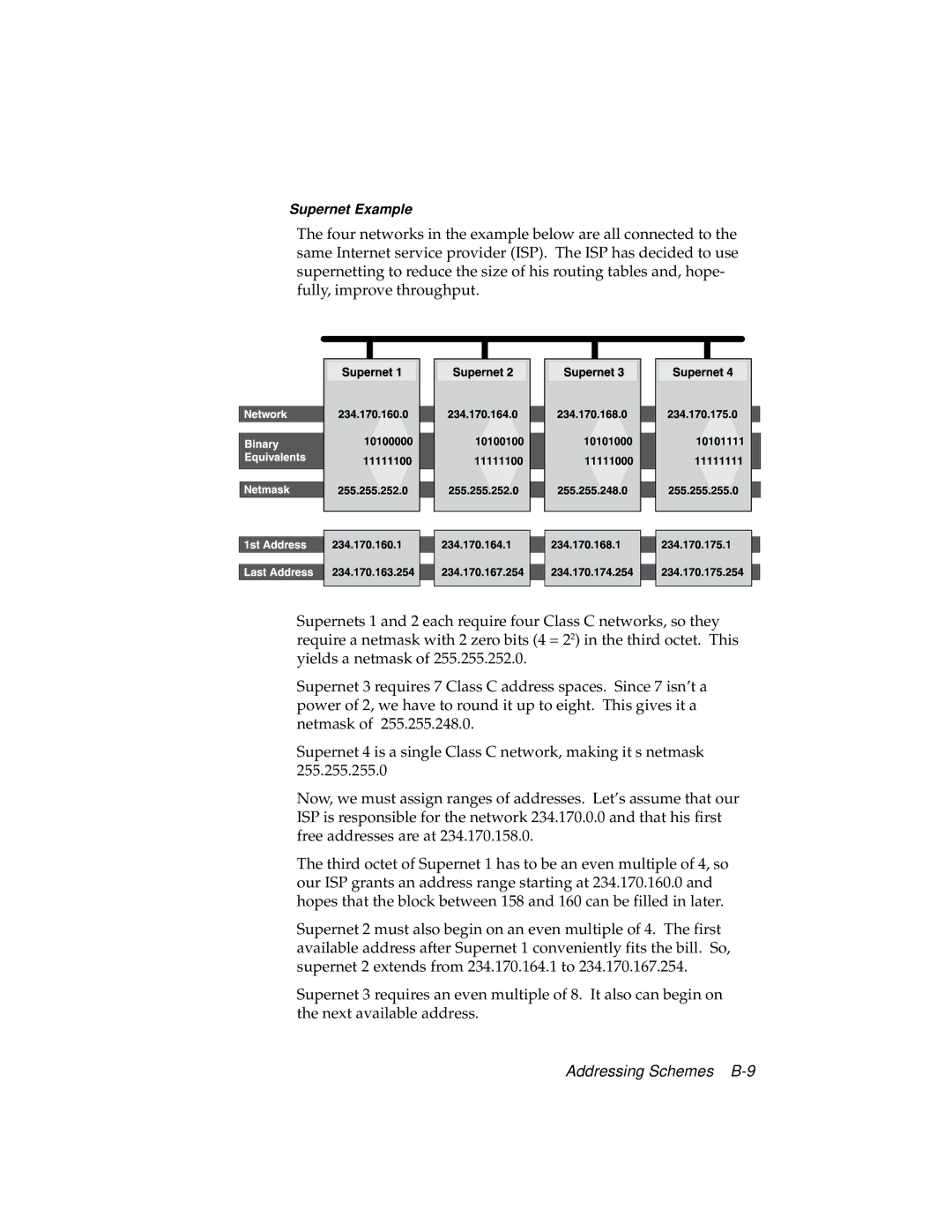
Supernet Example
The four networks in the example below are all connected to the same Internet service provider (ISP). The ISP has decided to use supernetting to reduce the size of his routing tables and, hope- fully, improve throughput.
Supernets 1 and 2 each require four Class C networks, so they require a netmask with 2 zero bits (4 = 22) in the third octet. This yields a netmask of 255.255.252.0.
Supernet 3 requires 7 Class C address spaces. Since 7 isn’t a power of 2, we have to round it up to eight. This gives it a netmask of 255.255.248.0.
Supernet 4 is a single Class C network, making it s netmask 255.255.255.0
Now, we must assign ranges of addresses. Let’s assume that our ISP is responsible for the network 234.170.0.0 and that his first free addresses are at 234.170.158.0.
The third octet of Supernet 1 has to be an even multiple of 4, so our ISP grants an address range starting at 234.170.160.0 and hopes that the block between 158 and 160 can be filled in later.
Supernet 2 must also begin on an even multiple of 4. The first available address after Supernet 1 conveniently fits the bill. So, supernet 2 extends from 234.170.164.1 to 234.170.167.254.
Supernet 3 requires an even multiple of 8. It also can begin on the next available address.
